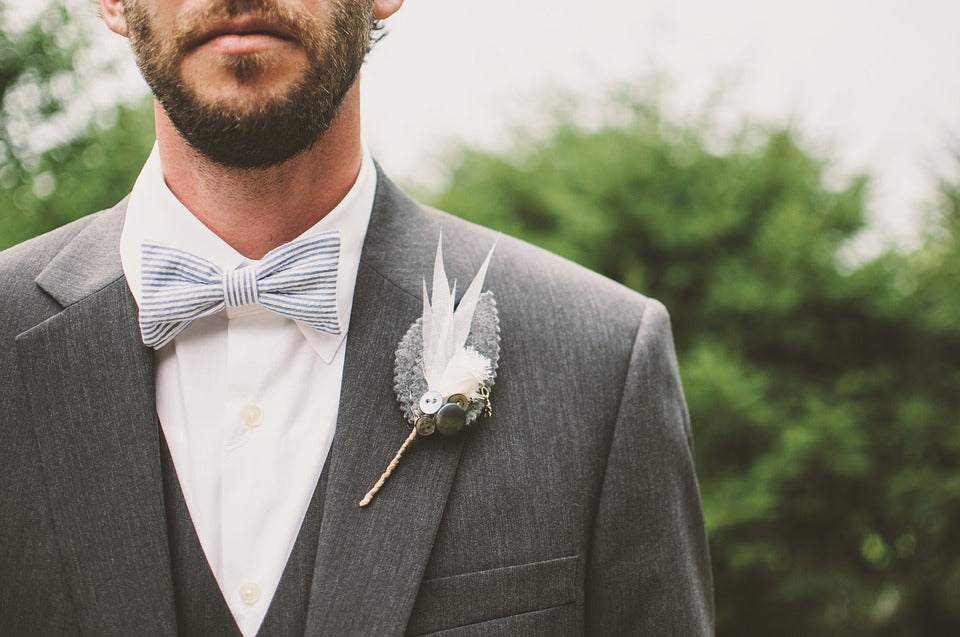Every man needs to own a suit. It's a must-have outfit that's required for certain occasions. Some men work in jobs that require them to wear a suit. But whether you work in one of these jobs or not, you'll probably still find yourself in need of a suit at some point or another. Weddings, for instance, usually follow a formal dress code. Even if it's not YOUR wedding, you may still be asked t wear a formal suit when attending as a guest. Unfortunately, not every man is familiar with the nuances of suit styles and formal wear. Perhaps you rarely wear a suit, or maybe you simply lack a knack for fashion. In any case, it's important to go back to the basics when putting together your suit. Far too many men make the wrong approach with their suit, only to create a lackluster appearance that does them no justice. So if you're struggling to create a stylish suit, keep reading for some helpful tips and tricks. We're going to walk you through the basics of choosing, and wearing, a suit that compliments your body and personal style.
Business Colors
If you plan on wearing your suit for business or business-related purposes, you'll want to choose an appropriate color. According to Wikipedia, there are four primary colors for business suits: black, light grey, dark grey, navy. Notice a pattern? These colors are typically dark, more so than other less-formal colors. Generally speaking, darker colors create a more formal appearance, which is why the aforementioned colors are recommended for business suits. Keep in mind, however, that you can wear these colors with or without patterns. Some men's suits are designed with pinstripes, adding a subtle yet attractive element to the outfit. Other suits are designed without patterns, focusing on a plain yet classic design that's easy to wear.
Match Tie and Lapel Width
A good rule of thumb when choosing a suit is to match the width of the jacket or coat lapels to the width of the necktie. As you may already know, lapels can be either notched (also known as stepped), peaked (also known as pointed), shawl, or trick. Each of these styles has its own unique characteristics, with notched lapels typically found on single-breasted suit jackets and similar forms of casual outwear.
Double-breasted suit jackets and coats, on the other hand, typically have peaked lapels. Regardless of which lapel you choose, make sure its width matches -- or comes close to matching -- the width of your necktie. If your lapels are wider than your necktie (or vise-versa), it will look downright awkward. Following this otherwise simple rule will go a long ways in creating a stylish and cohesive suit that compliments your body.

Match Trousers with Suit Jacket or Coat
Another rule to follow when choosing a suit is to match the trousers with your jacket or coat. If you buy the suit as a whole, it will probably come with both of these items. If you buy them separately, however, you'll probably need to select the right colors. Don't make the mistake of wearing trousers in a different color than your jacket or coat. While this may seem harmless enough, it can have a severe impact on the appearance of your suit. Just think about it: how would you look if you wore a suit with a brown jacket and black trousers? Not too good, right? Well, this is just one of many examples in which mismatching trousers and jacket colors can hurt your appearance. This problem is easily avoided, though, by matching your trousers with your jacket or coat.
Check the Shoulders
Check, and then double-check, the shoulders of your suit coat or jacket to ensure they fit. One of the most common mistakes men make when wearing a suit is choosing a jacket or suit with oversized shoulders. Too much space in the shoulders creates "bunching," essentially making it look like the jacket is falling off your body -- and that's not exactly a good style. A proper suit jacket or coat should feature shoulders that sit on your body, resting closely against your own shoulders. If the shoulders in your jacket or coat are too big, you have one of two different options: you can take it to a professional tailor for altering, or you can choose a different jacket or coat. Either way, don't make the mistake of wearing a jacket or coat with oversized shoulders.
Accessorize
Don't forget to wear the right accessories with your suit. When you're busy worrying about the suit colors, size, fit, design, etc., it's easy to overlook the accessories. Besides, how much of an impact do the accessories really have on a suit? The answer: more than you may realize. Accessories can make or break the appearance of a men's suit, which is why it's important to choose the right ones. Some of the most popular accessories for men's suits include neckties, wrist and pocket switches, pocket squares, cuff links, tie tacks, tie bars, and hats. Of course, there's no rule saying that you must wear all of these accessories. On the contrary, it's usually best to follow the "less is more" rule, focusing on just a few basic accessories instead of all of them.
The Fit
Following the tips listed above should set you on the right track to finding a perfect suit. However, there's one other thing you must consider: the fit. We've talked about this before on our blog, but it's worth mentioning again that suits are made (and sold) in several different ways, including off-the-rack, bespoke and made to measure. Off-the-rack suits are the least expensive and characterized by pre-made patterns using universal measurements. Made-to-measure suits are a step up, featuring custom measurements based on the customer's specifications. Bespoke suits offer the highest level of customization, featuring custom tailoring to fit the customer.



